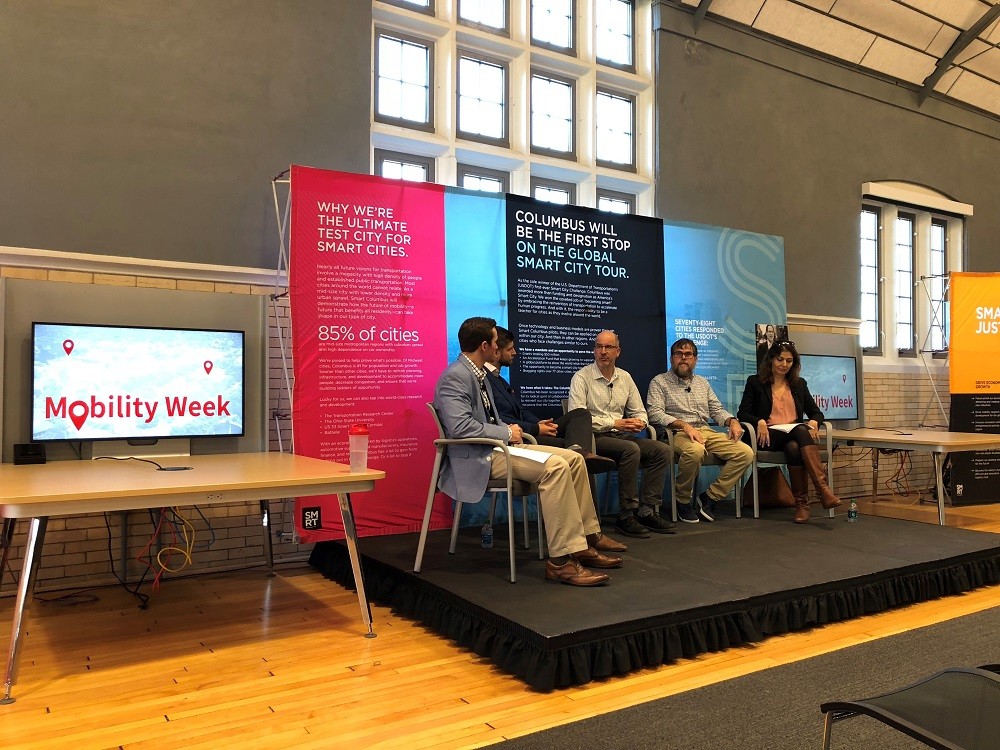Ohio State conference focuses on building a more walkable, bikeable community

Add me on LinkedIn (opens in new window)
|
Chris Booker Ohio State News 614.292.7276 |
More dedicated bicycle lanes, designated parking spaces for scooters and bikes and a change in culture could lead more people to find alternate means of getting to The Ohio State University.
Four university experts on health, mobility and city planning discussed what it would take to make central Ohio and the Columbus campus a more walkable or bikeable community last week at a conference at Pomerene Hall. It was part of Ohio State’s Mobility Week campaign to educate and inspire students, faculty and staff to learn more about the transportation options that go beyond the single-occupant car.
One of those experts was Harvey Miller, a cycling enthusiast and director for the Center for Urban and Regional Analysis. Miller is an avid bike rider and made sure he was able to bike to work when he joined Ohio State.
“When I moved to Ohio State in 2013, that was actually non-negotiable. I told my real estate agent to put circle a mile and a half around Ohio State and that’s where I will live,” he said.
For Miller, improving the conditions for people who walk or ride bicycles begins with devoting more space to their travel.
“We devote so little of our shared mobility space to anything but cars,” Miller said. “There’s a new concept called LIT lanes. LIT stands for low impact transport. The idea is what’s good for scooters is good for bikes.”
 He also suggested that as the city continues to upgrade infrastructure to support electric vehicles, it should also build out support for electric bicycles.
He also suggested that as the city continues to upgrade infrastructure to support electric vehicles, it should also build out support for electric bicycles.
Gulsah Akar, associate professor of city and regional planning at the Knowlton School of Architecture, said improving the commute for walkers or bicyclists comes down to safety.
“To make bicycling or walking more normalized, or to get people to choose those modes, it should feel safe. It should feel convenient. A person shouldn’t feel unsafe riding a bicycle,” she said.
“It comes down to normalizing the culture and encouraging student use as well,” said Tim Raderstorf, chief innovation officer for the College of Nursing. “It also means building the social infrastructure around it. The happiest cities tend to be cities that have the largest bike infrastructure.”
Building a culture goes beyond dedicating bike lanes – it also requires restaurants and shops that are accessible by bicycle and that have appropriate bike parking. Raderstorf cautioned that bicycle culture could be overtaken by the electric scooters that are so prevalent on and around campus.
John Shrader, field logistics coordinator in the Department of Transportation and Traffic Management, said teaching can play a role in improving the use of bikes. His office helps collect and recycle more than 300 abandoned bicycles each year. Many of the bikes are abandoned for reasons as simple as flat tires or broken chains.
“One of the things we thought might address that issue is having a bike shop on campus to show people how to fix their own bikes – a space where people could gather and learn things and socialize a little bit about bike culture,” Shrader said.
The university is exploring a bike shop in on campus but has not settled on a final location, he said.
Mobility Week was part of Ohio State’s ongoing effort to support the Smart Columbus campaign as the primary research partner. Columbus won the U.S. Department of Transportation’s first-ever Smart City Challenge and was awarded $50 million in grant funding to find new ways to improve mobility in central Ohio.


